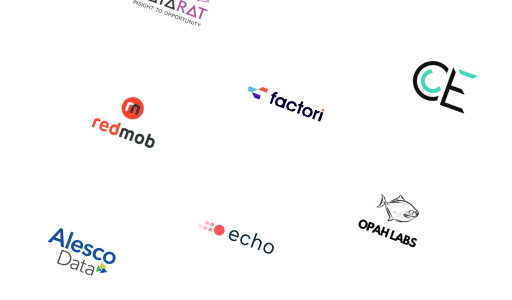What is Interest Data? Examples, Datasets and Providers

- Overview
- Datasets
- Providers
- Use Cases
- Attributes
- FAQ
- Overview
- Datasets
- Providers
- Use Cases
- Attributes
- FAQ
What is Interest Data?
Interest data refers to information collected about an individual’s preferences, hobbies, and activities based on their online behavior. It includes data such as the websites they visit, the content they engage with, and the products they purchase or show interest in. This data is used by marketers and advertisers to personalize and target advertisements, tailor content recommendations, and improve user experiences.
What Are Examples of Interest Data?
Examples of interest data include consumer interest datasets such as online search queries, social media interactions, website visits, and product reviews. Interest data is used to understand consumer preferences, trends, and behavior, enabling businesses to tailor their marketing strategies, improve product offerings, and make data-driven decisions. In this page, you’ll find the best data sources for consumer interest data.
Best Interest Databases & Datasets
Here is our curated selection of top Interest Data sources. We focus on key factors such as data reliability, accuracy, and flexibility to meet diverse use-case requirements. These datasets are provided by trusted providers known for delivering high-quality, up-to-date information.

Purchase Intent Data | Contact Level Interest Data | 320M+ B2B & B2C Contacts | 21,000 Interest Categories | Daily Leads

Global POI/ Point of Interest Data

Factori AI & ML Training Data | Point of Interest Data (POI) | Global | Machine Learning Data

GIS Data| Asia and MENA POIs| Understand Your Retail Competitor Landscape | Location Data | Point of Interest Data

Voter Data Append, USA, CCPA Compliant, Political Interest Data

POI & Building Footprint Data | 11M+ Locations | UK, France, Italy, Germany & Spain | Point of Interest Data

Points of Interest Data | Cannabis Dispensary Outlets in the US | Store Locations Database

Short Interest Data - market sentiment indicator with global coverage

B2B Intent Data | 21,000 Interest Categories | Daily Leads I Verified Email, Phone, Address, and LinkedIn Profile Data | B2B Buyer Interest Data

POI/ Point of Interest Data Europe
Can't find the data you're looking for?
Let data providers come to you by posting your request
Post your request
Top Interest Data Providers & Companies
Popular Use Cases for Interest Data
Interest Data is essential for a wide range of business applications, offering valuable insights and driving opportunities across industries. Below, we have highlighted the most significant use cases for Interest Data.
Main Attributes of Interest Data
Below, we outline the most popular attributes associated with this type of data—features that data buyers are actively seeking to meet their needs.
| Attribute | Type | Description | Action |
|---|---|---|---|
| Float | The latitude of a point on earth's surface. Commonly abbreviated as "lat". | View 291 datasets | |
| String | The name of a city. | View 251 datasets | |
| String | The phone number of a contact or organization. | View 239 datasets | |
| String | The address of a company or contact (street name, number, zip code, city, county, country). | View 238 datasets | |
| String | The email address of a company or contact. | View 237 datasets | |
| String | The first name of a contact. | View 221 datasets |
Frequently Asked Questions
How is the Quality of Interest Data Maintained?
The quality of Interest Data is ensured through rigorous validation processes, such as cross-referencing with reliable sources, monitoring accuracy rates, and filtering out inconsistencies. High-quality datasets often report match rates, regular updates, and adherence to industry standards.
How Frequently is Interest Data Updated?
The update frequency for Interest Data varies by provider and dataset. Some datasets are refreshed daily or weekly, while others update less frequently. When evaluating options, ensure you select a dataset with a frequency that suits your specific use case.
Is Interest Data Secure?
The security of Interest Data is prioritized through compliance with industry standards, including encryption, anonymization, and secure delivery methods like SFTP and APIs. At Datarade, we enforce strict policies, requiring all our providers to adhere to regulations such as GDPR, CCPA, and other relevant data protection standards.
How is Interest Data Delivered?
Interest Data can be delivered in formats such as CSV, JSON, XML, or via APIs, enabling seamless integration into your systems. Delivery frequencies range from real-time updates to scheduled intervals (daily, weekly, monthly, or on-demand). Choose datasets that align with your preferred delivery method and system compatibility for Interest Data.
How Much Does Interest Data Cost?
The cost of Interest Data depends on factors like the datasets size, scope, update frequency, and customization level. Pricing models may include one-off purchases, monthly or yearly subscriptions, or usage-based fees. Many providers offer free samples, allowing you to evaluate the suitability of Interest Data for your needs.
What Are Similar Data Types to Interest Data?
Interest Data is similar to other data types, such as Psychographic Data, Consumer Donation Data, Consumer Sentiment Data, and Customer Sentiment Data. These related categories are often used together for applications like Advertising and Audience Segmentation.







